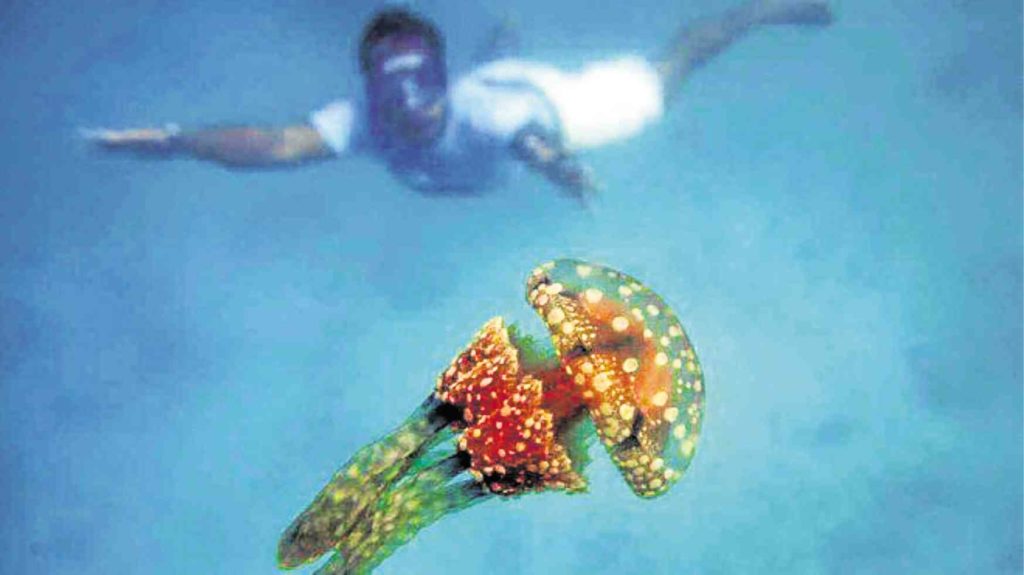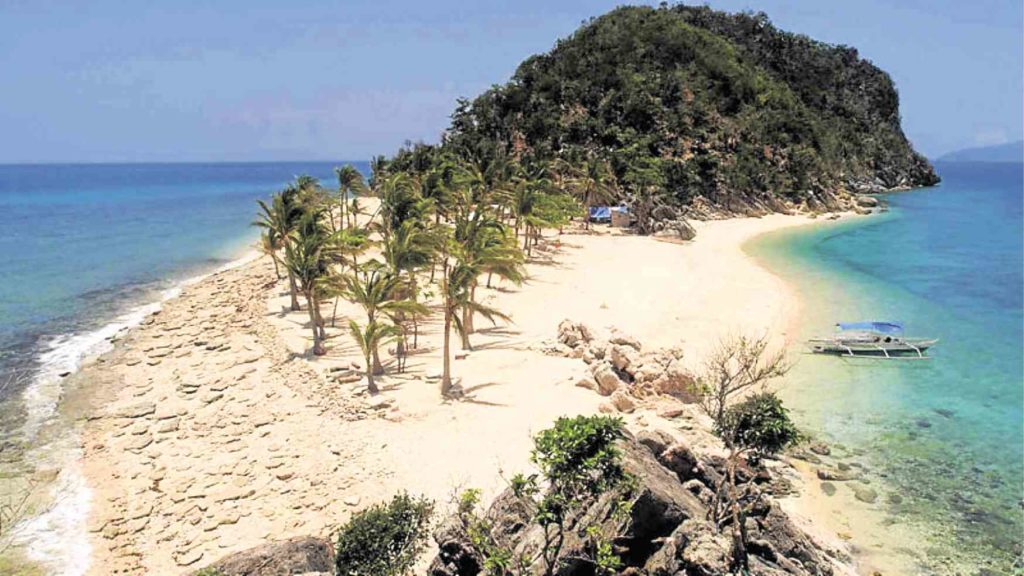Taking the road less traveled
Book a trip to these unblemished islands that are found off-the-beaten path to save you from jampacked resorts and hotels on your next summer adventure.
Catanduanes
Dubbed the “Happy Island,” the province of Catanduanes is located at the easternmost part of the main Bicol region. With its pristine beaches, majestic waterfalls, rolling terrains and heritage sites, this eco-tourism paradise is a must destination for adventure-seekers and nature lovers alike.
The province is divided into two districts which have their own unique attractions. The west part is home to nine of 11 beaches in the island, while the east part boasts of high terrains and viewpoints. The provincial tourism office estimated that it would take at least a half month to explore all the identified 33 spots in the island.
Catanduanes, which faces the Pacific Ocean, is a natural pathway of tropical cyclones that it earned the moniker “Land of the Howling Winds.” On the good side, it has become the country’s newest surfing haven. From September to October, the Puraran Surf Spot hosts local and international surfers who want to experience the “majestic waves.”
For those who love trekking, there are seven mountains and viewpoints to choose from, but the most popular is the Binurong Point as it resembles the rolling green terrain and rocky cliffs of Batanes province. It would take about 40 minutes to reach its highest point that provides a stunning view of the Pacific. “Binurong” is a Bicolano term for pagdadaing, a common Filipino way of preserving food, because locals would usually bring their brined fish and have them dried up there.
TO GET THERE: There are direct flights from Metro Manila to Virac. One may also take a bus (10 to 12 hours) from Cubao to Tabaco City seaport. From there, take a ferry boat, RORO or fastcraft to Virac (two to five hours) or San Andres (one to three hours) towns.
Bucas Grande Islands

Bucas Grande Islands
With more than 100 islands, Bucas Grande, is brimming with diverse marine life. Located in Socorro in Surigao del Norte, Bucas Grande has more than just pristine beaches and powdery white sand as lakes, hidden lagoons, coves and caves are tucked between the islands.
At Sohoton National Park, which is a strictly protected area because of its rich biodiversity, visitors can not only dive into the turquoise waters, but also swim with the “lagoon jellyfish.”
The “stingless” jellies dot the lagoon with their umbrella-shaped bodies or “bells” where elongated clubs dangle from the midsection. But they are reportedly not entirely stingless as their sting is so mild that it does not trigger any reactions from humans.
Near the Jellyfish Lagoon is the Sohoton Cave, Bucas Grande’s main attraction. The cove is composed of seven islets with two fascinating caves, the “snoring” and diving caves.
The Hagukan cave or the “snoring” cave is named as such because as the tide rises to almost block the entrance of the cave, the waves inside the cave produce the sound of a man’s low and loud snoring.
The Magkukuob cave, or the diving cave, provides an adrenaline high. Visitors have to rock-climb to get out of the cave and jump off the cliff to get back to the waters.
TO GET THERE: From Surigao City, where an airport is located, one needs to ride a van or a bus going to Hayanggabon Port in Claver town, an hour and 40 minutes away. From the port, take a boat to get to Bucas Grande Islands. Motorboats going directly to the islands are privately hired, costing about P1,500.
Islands in Antique province
West of Aklan province, Antique is touted as an alternative to the world-famous Boracay Island for its unspoiled beaches. It is home to some of the beautiful beaches, dive sites, falls, marine life, bat and fish sanctuaries and mouth-watering seafood.
One of the three major islands in the town of Culasi is the picturesque Malalison Island, which features a pristine beach, a long sandbar and a view of the Mt. Madia-as. The island is ideal for sailing, snorkeling and scuba diving. The other island, Batbatan, has a fish sanctuary.
Antique’s tourism officer previously said in a report that they want to protect the environment and “don’t want to go the way of Boracay.” And the province is doing just that as there are no hotels or resorts to accommodate tourists. Those who visit the island usually stay overnight in the homes of residents or at the multi-purpose hall.
In the town of Tibiao, tourists can try white-water kayaking or trek to the seven-tiered Bugtong Bato Falls and take a dip in a cauldron of hot water, famous in the province as hot “kawa” bath.
TO GET THERE: From Iloilo City, take a bus bound for Culasi or Pandan. From Kalibo, take a bus bound for San Jose and get off at Culasi. Rent a boat to take you to the islands from the Culasi Port.
Islas de Gigantes

Islas de Gigantes
Known as “Iloilo’s hidden paradise getaway,” Islas de Gigantes lies northeast of Carles town proper, which is about 145 km from Iloilo City. The islands’ growing popularity is due to its isolated and pristine white sand beaches and coves, crystal-clear waters, majestic rock formations and storied caves.
According to folklore, Islas de Gigantes got its name from the inhabitants who once roamed the islands and were about nine feet tall. The large wooden coffins found on the island were supposedly used by the early settlers.
Kick off a day of exploration with the Bakwitan Cave, so named because it was used as bakwitan, or an evacuation site by residents fleeing Japanese soldiers during World War II. The cave is also believed to have been used as ancient burial grounds. Shards of pottery and human bones can be found in the cave.
The postcard-pretty Cabugao Gamay Island is the most popular among the islands because of its rock formations, white sand beach, lush trees and clear waters.
Near Cabugao Gamay is the Tangke saltwater lagoon nestled between towering rock formations. Visitors can dive from the steep rocks and swim in the cool waters. Monkeys can even be spotted when the area is less crowded.
TO GET THERE: From Iloilo City, ride a bus or van to Estancia town. Take a tricycle to Estancia Port, where a pumpboat will take you to the islands.
Malasimbo
Every March, Puerto Galera in Oriental Mindoro draws not only the beach lovers but also the music, arts, culture lovers with the three-day Malasimbo Festival.
The annual festival, held at the foot of Mt. Malasimbo on the northern tip of the island of Mindoro, combines traditional and contemporary arts and culture as well as music performances with the aim of increasing awareness on the protection and sustainability of the natural environment.
This year, Malasimbo Festival will mark its eighth edition, growing from a small circle of friends, family and music artists and enthusiasts in 2011 to a popular event gathering thousands of visitors. It will be held on March 23-25 and headlined by reggae legends Big Mountain.
TO GET THERE: From Metro Manila, drive or take the bus to Batangas port. From the port, take the ferry to Puerto Galera. Ride the Malasimbo-marked jeepneys going to the festival venue from different points at the road near the beaches.
Sources: Inquirer Archives, antique.gov.ph